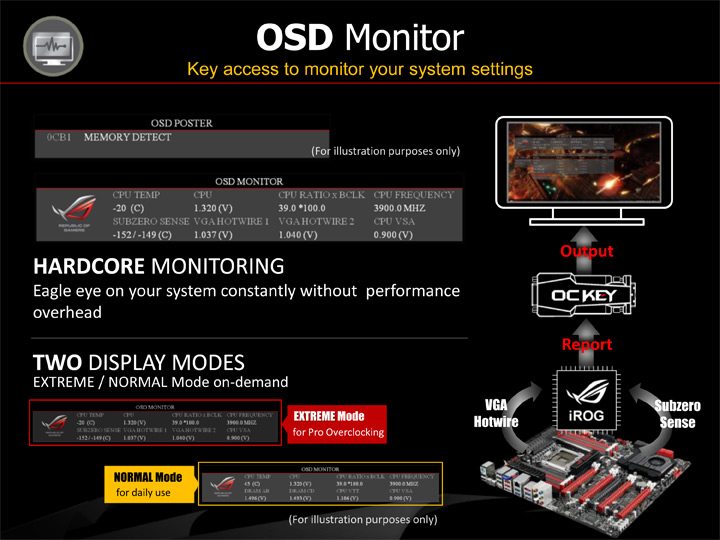Asus Rampage IV Extreme X79 Motherboard Review
Andy Ruffell / 13 years ago
Even though we spoke about some of the main features in the preview of this board, we felt that certain areas needed to be covered in a bit more detail as they are what we’d class as revolutionary and could change the way that the future of boards function.
Whilst these features aren’t specific to Intel and the X79 chipset, they are still worth mentioning as this review focusses on an Asus branded product, so it’s only right that we comment on their key features and one of those major features is the OC Key.

From the go the OC Key looks mysteriously like the kind of device that would plug into your cars ECU ODBII port, and for those who don’t know what they is, we suggest that you check out Google to find out, not that it matters in the slightest. The way that it works is as a pathway between your graphics card’s DVI port and the DVI cable that leads to your monitor and also connects into the board via a supplied cable.
By the OC Key being positioned between your monitors signal cable and the graphics cards output port, it allows an overlay or OSD to be displayed on the screen, much like you’d see with the menu that your monitor has. This allows you to still use all of the functions behind the overlay with ease.

The overlay has two main segments detailed as OSD TweakIt and OSD Monitor and whilst the TweakIt features are great, we’d still stick to tweaking in the BIOS and possibly use the TweakIt features for fine-tuning whilst stress testing the machine which can all be done in real-time. The OSD Monitor allows you to see the OSD Poster which informs you what stage of the boot process it’s currently at as well as listing all of the relevant settings you’d commonly monitor, such as the CPU temperature, voltages, ratio and overall frequency.





















